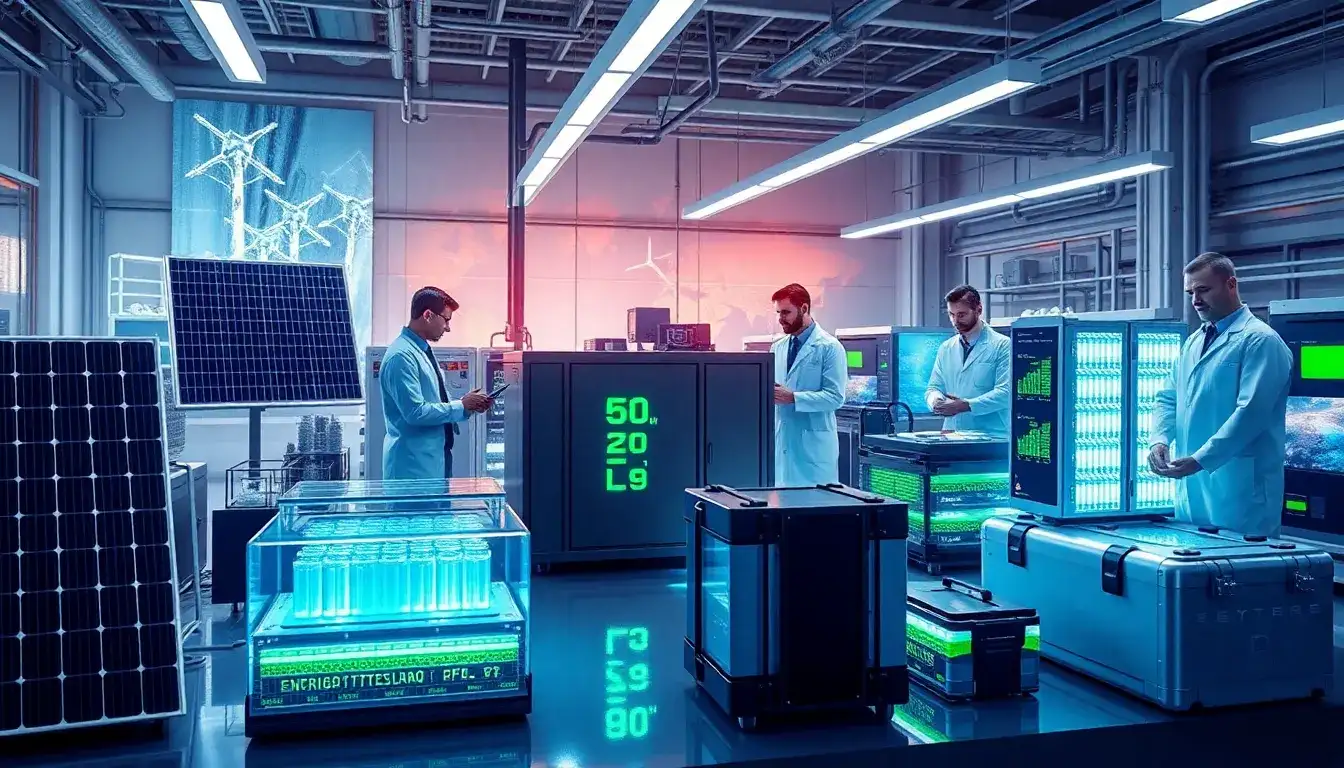
The energy storage sector has recently experienced significant advancements and collaborations, marking a rapid progression towards a new developmental stage. Firstly, in terms of strategic partnerships, Guangzhou Zhiguang Energy Storage and Xiamen Haichen Energy Storage officially signed a two-year strategic cooperation agreement on March 17. Under this agreement, Zhiguang Energy Storage plans to procure up to 15 GWh of battery cell products from Haichen Energy Storage. This collaboration aims to deepen both companies’ cooperation in areas such as energy storage system research and development, as well as supply chain coordination, effectively supporting Zhiguang’s capacity needs in key sectors like commercial and industrial energy storage and grid-side storage, thereby strengthening its market leadership.
In terms of technological innovation, there have also been exciting developments. On March 17, Huajian New Energy Technology (Shanghai) Co., Ltd. announced that its patent for a “Centralized Energy Storage Thermal Management System” has been published by the National Intellectual Property Administration. This system employs a unique cooling module and dual-cooling circuit design to achieve synergistic heat dissipation among multiple modules within the energy storage system. This innovation enhances battery operational safety and effectively reduces system volume by over 20%. This technological breakthrough offers a new solution for the compact layout of large-scale energy storage power stations.
Shortly after, on March 18, Guangdong Changneng Investment Holdings Co., Ltd. reported good news as its patent for a “New Energy Storage Battery Heat Dissipation Device” was authorized. This device features a multi-layer heat distribution plate structure that can rapidly conduct heat from the battery pack to the outer casing, resulting in an overall heat dissipation efficiency improvement of 30% when combined with external cooling solutions. This technology is vital for ensuring the safe operation of high-energy-density batteries used in commercial energy storage and electric vehicles.
On the same day, DeRun New Energy (Shenzhen) Co., Ltd. also announced that its patent for a “Stackable Modular Home Energy Storage Device” has been authorized. This device incorporates an innovative guiding limit structure design that allows for the quick stacking of modules, supporting flexible expansion to capacities exceeding 10 kWh. Additionally, its built-in smart temperature control system enables compatibility with various scenarios such as residential photovoltaic systems and grid backup, facilitating the widespread adoption of distributed energy storage.
Regarding project developments and market dynamics, Nantong Port successfully completed the first international shipment of lithium battery storage cabinets on March 17, signifying an important transformation towards greener and higher value-added logistics at the port. Meanwhile, the energy storage installation capacity in the Xinjiang Uygur Autonomous Region has surpassed 10 million kW, reaching 9.777 million kW/32.663 million kWh, placing it among the top in the country. These advancements not only showcase the rapid development of the energy storage industry but also highlight its crucial role in facilitating energy transition.
Additionally, the annual production project of 5 GWh lithium battery energy storage systems by Anhui Shijiaheli New Energy Co., Ltd. is progressing rapidly. Currently, 70% of the project has been completed, with production expected to commence in June. Once operational, it will establish a full industrial chain capacity for energy storage packs, PCS, and energy storage cabinets, with an anticipated annual revenue of 3.5 billion yuan. The successful implementation of this project will effectively meet the renewable energy consumption needs in East China, supporting the energy transition in the Yangtze River Delta region.
In terms of policy direction and industry activities, SiGe New Energy hosted the “Joint Thinking, Aspiring to the Future” Global Supplier Conference in Shanghai on March 17, attracting over 100 partners. The conference engaged in in-depth discussions on topics such as photovoltaic energy storage technology innovation and supply chain collaboration, while also recognizing outstanding suppliers for 2024. As a leading enterprise in global distributed energy storage integration, SiGe New Energy aims to build a more robust global supply chain system through this conference.
Furthermore, local energy storage subsidy policies are being continuously enhanced. A coastal city in Guangdong has introduced subsidy policies for commercial and industrial energy storage projects, offering 300 yuan per kilowatt-hour (up to 2 million yuan) to encourage users to implement peak shaving and valley filling. Additionally, a major new energy province in the west has launched operational subsidies for energy storage projects to ensure long-term returns for energy storage stations. The introduction of these policy measures will further promote the formation and development of national energy storage industry clusters.







